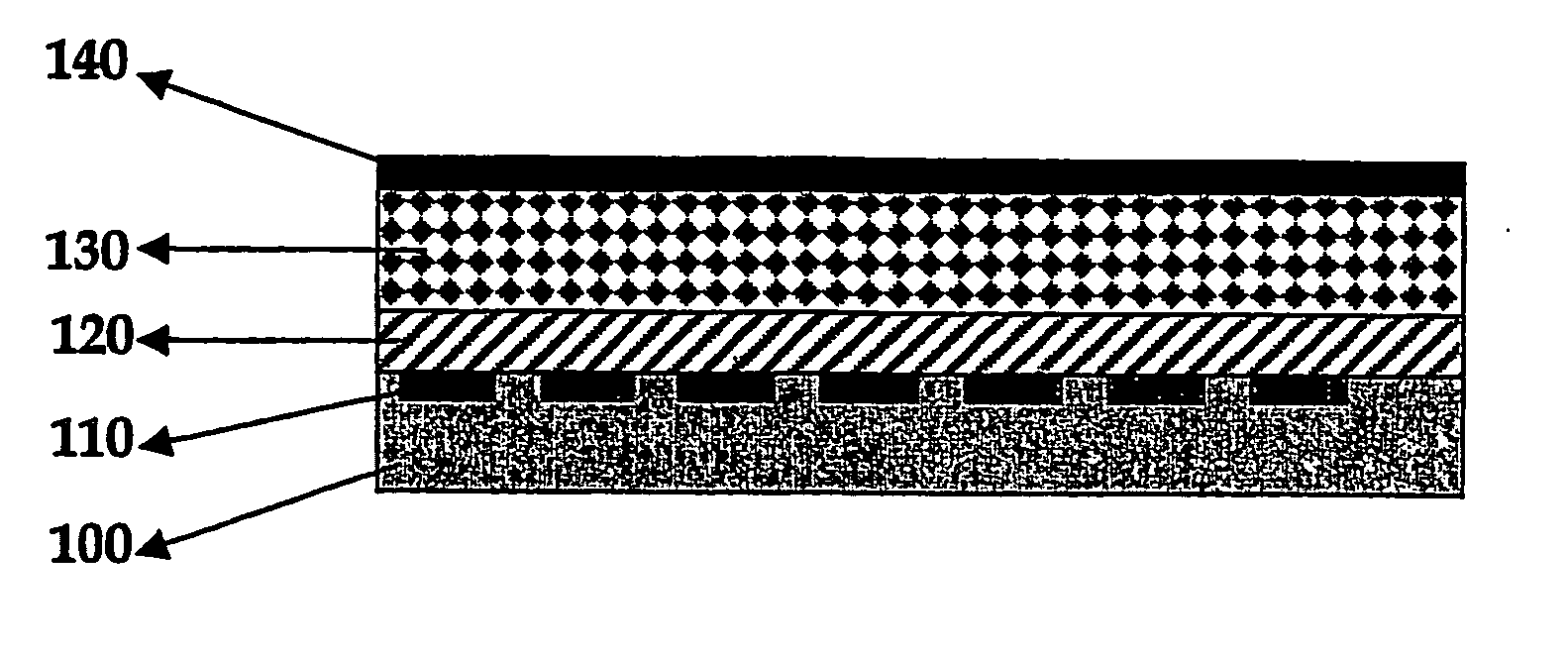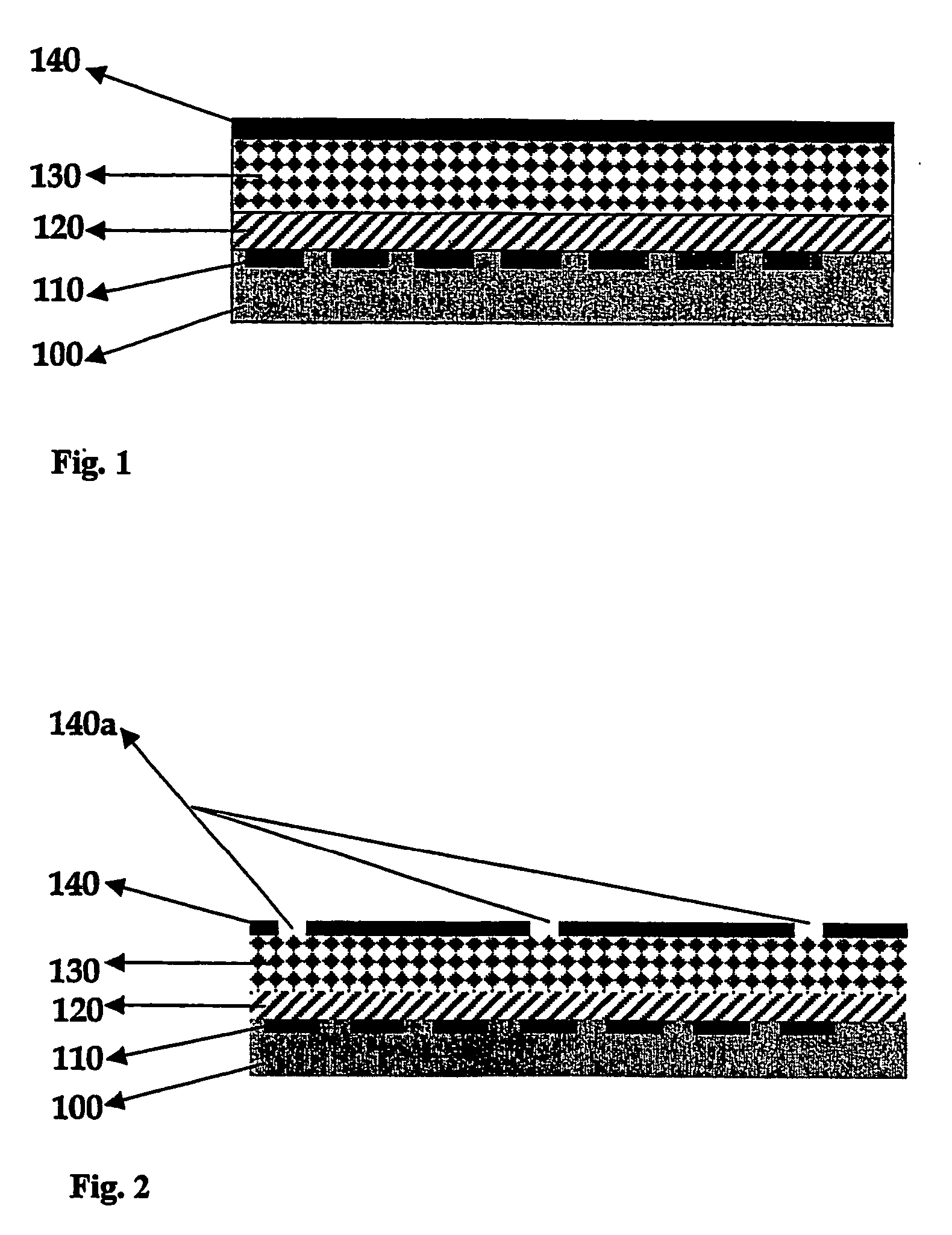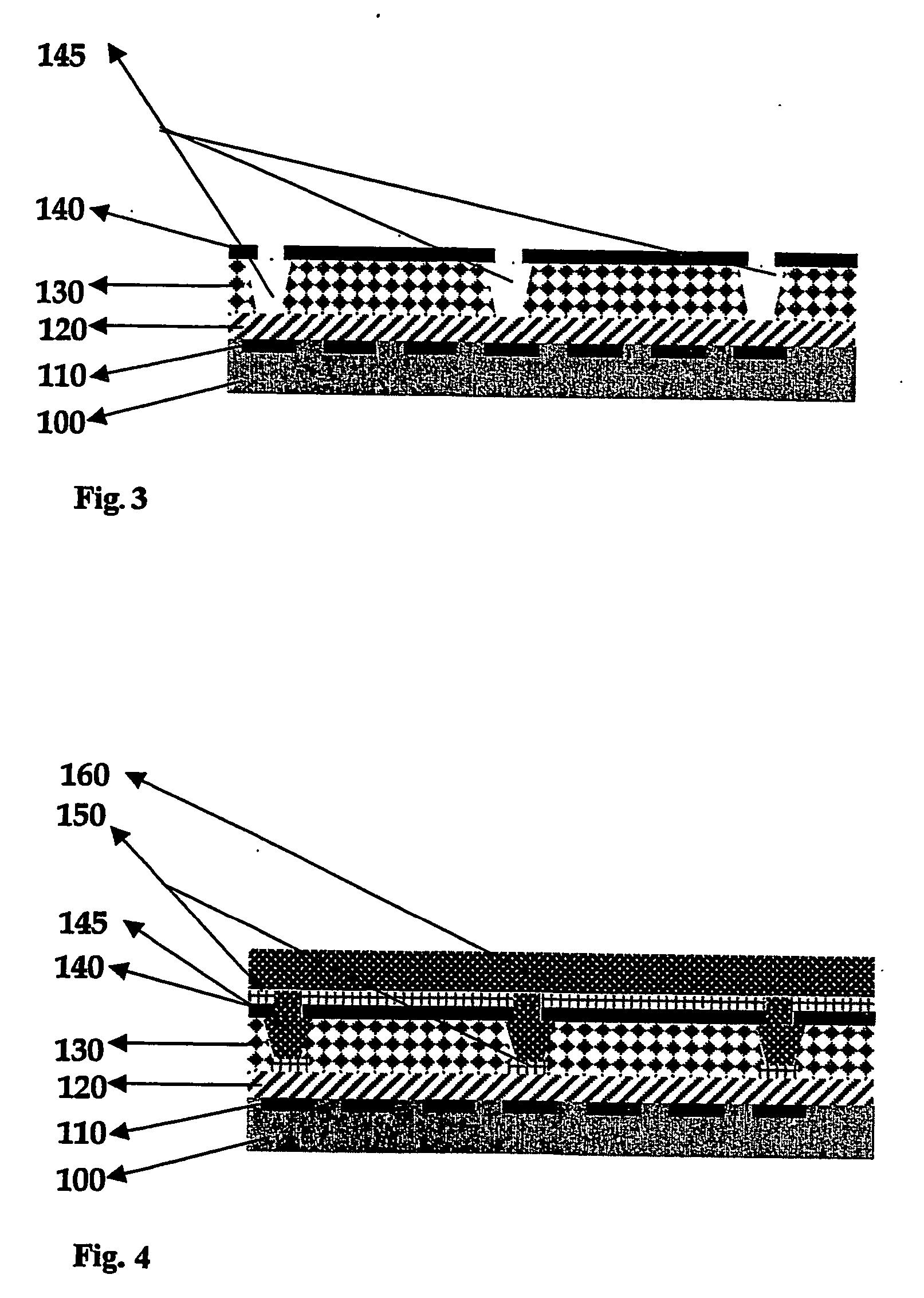Method of patterning a functional material on to a substrate
a functional material and substrate technology, applied in the direction of solid-state device manufacturing, electric devices, semiconductor/solid-state device manufacturing, etc., can solve the problems of incomplete device failure, compatibility of solvents, and additional challenges, and achieve the effect of facilitating charge injection and facilitating charge injection
- Summary
- Abstract
- Description
- Claims
- Application Information
AI Technical Summary
Benefits of technology
Problems solved by technology
Method used
Image
Examples
Embodiment Construction
[0055]FIG. 1 shows a device comprising a substrate 100, which can be transparent or opaque, a patterned bottom electrode 110, which can be a cathode or an anode and an organic layer 120 that firstly facilitates charge injection from the bottom electrode into the device and secondly is largely insoluble in the solvent used to dissolve the electroluminescent organic material and the sacrificial organic material described below. The layer 120 is a charge injection layer, i.e. a hole transporting layer e.g. Pedot-PSS (polyethylenedioxythiophene-polystyrene sulphonate) if the bottom electrode 110 is an anode, and an electron transport layer if the bottom electrode is a cathode. A sacrificial organic layer 130 e.g. of poly(vinyl alcohol) is insoluble in the solvent used to dissolve the organic electroluminescent material described below. The solvent system used to spin coat the sacrificial organic layer 130 should not cause any damage to the charge injection layer or damage / dissolve the o...
PUM
| Property | Measurement | Unit |
|---|---|---|
| sizes | aaaaa | aaaaa |
| droplet size | aaaaa | aaaaa |
| size | aaaaa | aaaaa |
Abstract
Description
Claims
Application Information
 Login to View More
Login to View More - R&D
- Intellectual Property
- Life Sciences
- Materials
- Tech Scout
- Unparalleled Data Quality
- Higher Quality Content
- 60% Fewer Hallucinations
Browse by: Latest US Patents, China's latest patents, Technical Efficacy Thesaurus, Application Domain, Technology Topic, Popular Technical Reports.
© 2025 PatSnap. All rights reserved.Legal|Privacy policy|Modern Slavery Act Transparency Statement|Sitemap|About US| Contact US: help@patsnap.com



